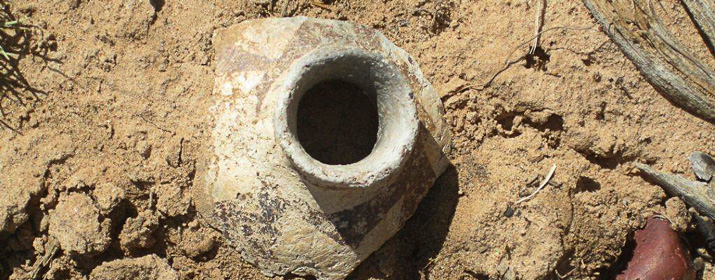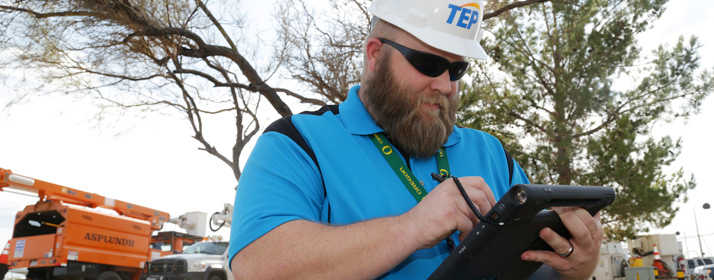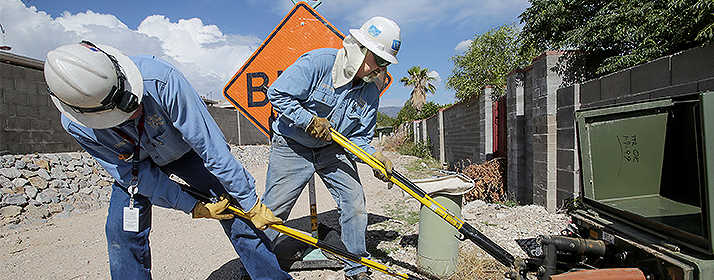
While constructing and maintaining power lines, Tucson Electric Power crews can encounter an array of archaeological artifacts. TEP works with state officials to preserve and protect these sensitive cultural resources.
Avoiding locations with cultural resources is always the first goal. When that’s not possible, TEP works with federal, state and tribal authorities and professional archaeologists to determine the best course of action.
TEP goes above and beyond to avoid disturbing artifacts. The company’s Land Resources team partners with the Arizona State Historic Preservation Officer and researchers at the Arizona State Museum to protect sensitive resources that are discovered.
The company abides by the National Historic Preservation Act and the State Historic Preservation Act, which govern the treatment of prehistoric and historic cultural resources. These laws provide a platform that allows for the study and protection of the resources so that future generations can understand how our ancestors lived and why some locations are more significant than others.
“Part of our normal environmental checklist is the protection of historic and cultural resources. In Tucson, a lot is known about culturally sensitive areas and historic sites, but in remote areas, frequently there remains more to discover,” said Cheryl Eamick, Senior Environmental Land Use Planner for TEP. “Understanding our heritage plays a large role in the development of our current social culture.”
The TEP Land Resources department responds to more than 1,500 requests per year to review existing land rights, including requirements for the protection of cultural resources.
Three years ago, TEP crews and contractors encountered pottery and other artifacts while clearing vegetation near transmission lines on the Navajo Nation in New Mexico. The team worked with a Navajo Nation archaeologist and multiple land owners to document and preserve centuries-old pottery, petroglyphs, hogans and corrals at the site.
Finds such as this can help archaeologists piece together what life was like and how indigenous populations evolved over time.
“We didn’t plan on finding this. When we saw how culturally rich the area was, we took action to protect it,” Eamick said. “We collaborate with our construction crews and contractors to make sure everyone has an understanding of these culturally sensitive resources and how best to treat them.”
The team worked hard to avoid such discoveries during construction of the new Pinal Central to Tortolita transmission line in Pinal County. Land Resources reviewed the line’s route for cultural and biological resources and worked with TEP’s Civil Transmission Engineering team to avoid sensitive areas. Crews used existing access roads and strung the power line by helicopter to minimize ground disturbance.
Sometimes vegetation itself can have archaeological value. During construction of the Tortolita to North Loop quad circuit line, workers found massive agave fields that had been terraced to work with the natural drainage pattern for irrigation. The agave fields provided food and clothing for the Hohokam people who inhabited the area more than 1,000 years ago. To preserve the site’s history, an archeologist published a report and artifacts found were curated with the Arizona State Museum.
“No matter the scale of the project, TEP’s strategy is first to avoid known sensitive resources, then to minimize or mitigate impacts, as necessary,” Eamick said. “This demonstrates our commitment to regulatory requirements and our investment in the community.”






